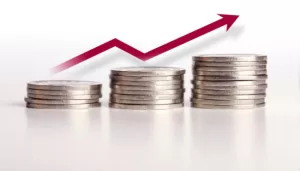United Kingdom: Will the Positive Signs Lead to Economic Turnaround

The UK government has steered the economy in the last decade to contain and consistently reduce its fiscal deficit. It hit a high of 10.2% in 2009 and after consistently reducing for the whole decade it stood at 2.7% in 2019. It happened in a decade, when even though the economic growth was on the lower side, inflation and interest rates were also quite low resulting in lower borrowing rates and debt was not an issue. In this period, the government debt interest as % of GDP also declined hitting a low of 1.18% in 2020. Then it all came to a screeching halt.
The fiscal deficit shot up to 15% in the pandemic year and it is still above 5% amidst the environment of high interest rates and inflation. The government debt interest as % of GDP has hit a high of 4.77%, which had never crossed 4% in the last 75 years. The previous high was 3.92% in 1985. Therefore, the focus of investors has predominantly shifted to its ability to continue the path of fiscal prudence and service debt, without any undue impact on the economy.
The current government of the UK has been forced to increase taxes and cut expenditures to achieve a fiscal balance. The market has given a thumbs up to the policy direction taken by the UK government, and since 26th September, GBPUSD is up 17%, UK 10-year bond yield is down 78 bps (price is up ~9%) and FTSE 100 is up 12%. At the same time, there is a severe impact on living standards and the government is torn between managing the economy and managing politics. Fortunately, there is still some time since the next general elections in the UK are likely in autumn 2024 and therefore the government can utilize the next 3-4 quarters to take hard measures to get the economy back on track.
One of the major issues plaguing the economy is labour supply shortages. 2020 also marked a peak in the labour force participation rate at 64.4% and has sharply declined to 63.2% with the exodus of the older and more experienced workforce. In his Spring Budget, Jeremy Hunt tried to address this by announcing an increase to the amount workers can add to their pension savings account before they attract higher tax threshold. He also announced 30 hours of free childcare for children over 9 months old (previously it was for children above 3 years). Expensive childcare is wide which may increase the labour force participation of more female workers. This is one of the critical parameters to watch, especially with Brexit, to determine whether the economy is coming back to normalization or not.
The corporate tax has already been reinstated to 25% and although businesses are not happy with this, the chances of them leaving the UK just because of corporate tax is minimal. The govt has also indicated that taxes would be lowered once inflation and interest rates stabilized and, in all probability, they will be decreased prior to the autumn 2024 elections. Where does it leave investors? The spate of bad news about the UK economy looks to be over now. The BoE seems to be near the end of the rate hike. The government looks determined to stabilise the economy in 2023. The probability of positive surprises seems to be much higher than negative surprises and FTSE 100 is trading at 10.4x forward earnings, which is about 20% lower than its last 20-year average.
It looks like an opportune time to explore investment in UK assets, keeping a sharp eye on the key macroeconomic data and policy direction.
This article is provided by TIW Capital Group (TIW CG)
Website: www.tiwcg.com
LinkedIn: https://www.linkedin.com/company/tiw-capital-group/mycompany/















